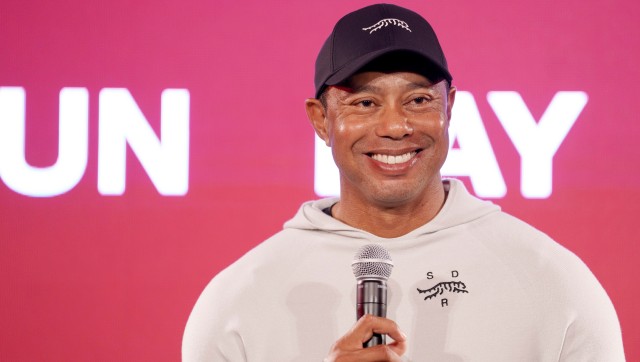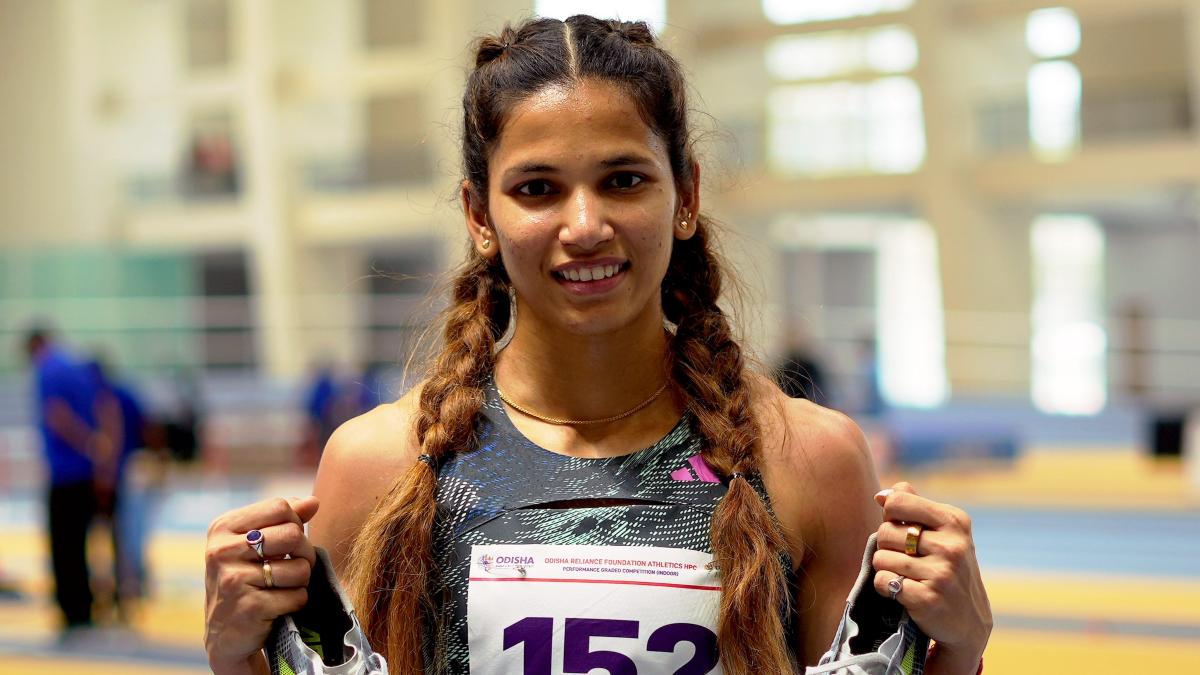Eliud Kipchoge made history on Saturday with a blistering run at Vienna’s Prater Park, where he clocked 1:59:40 to become the first human to ever dip under the 2-hour mark in a marathon.
The timing will not count as official because many conditions, which were tailor-made for the attempt, were in direct contravention of the IAAF rules. However, for posterity, Kipchoge will be remembered as the first man to finish a marathon under the 2-hour mark. The Kenyan himself has branded the attempt — called the INEOS 1:59 Challenge — as athletics’ ‘moon-landing moment’ while people on social media and journalists worldwide have expressed their admiration for Kipchoge’s run, calling it a triumph of human endurance.
But was it really a triumph of human endurance? Has the Eliud Kipchoge who ran 2:00:25 at Monza in 2017 under heavily contrived settings in an attempt known as Nike Breaking2 become Eliud Kipchoge who could run 1:59:40 in Vienna? Is the Eliud Kipchoge we saw thumping his chest as he zoomed past the finish line in under two hours at Prater Park actually a faster version of the Eliud Kipchoge who finished the 2018 Berlin Marathon 13 months ago with a timing of 2:01:39?
Or, was it just a mixture of the world’s fastest long-distance runner going about his business in a pair of bespoke shoes that are known to give runners over four percentage advantage at least in terms of running economy. Over four percent at least, because the shoes Kipchoge wore for his successful attempt are a new prototype that the sportswear giant has divulged little details about.
In fact, it was only because of some enterprising people, who found details of the shoe in US Patent and Trademark Office, that we know anything about the newest model of the shoe at all. According to an article on The Independent , this newest version of the shoes, called Nike AlphaFLY, are even more advanced than the original Vaporfly shoes, which were known to give, as per Nike research, a four percent advantage to runners. Not surprisingly, the Vaporfly shoes have been used to set the five fastest marathon times in the world at the moment.
Sports scientist Ross Tucker has estimated that the Vaporfly gives a runner a 60- to 90-second advantage. Scientist Michael Joyner had also estimated last year that the Vaporfly Kipchoge wore in 2017 for his Breaking2 attempt was also likely to help a runner shave off a minute from their time. This means that the shoes were decisive in Kipchoge going below the round figure of two hours which we arbitrarily consider as a mythical barrier to begin with.
What’s more, while the Vaporfly are available in the market, the new prototype shoes that Kipchoge wore while running are available to only certain athletes.
Given how critical the shoes are to the eventual outcome, it is hard not to compare the effect of the shoes to the swimsuits created by Speedo ― called LZR Racer ― that were branded as ‘technological doping’. These high-tech suits were made of polyurethane, a foam-like material enclosing tiny pockets of gas which made swimmers more buoyant. Essentially, they made swimmers float higher in the water which thereby reduced drag. They were eventually banned by FINA, the world governing body of swimming, but not before they had taken the 2008 Beijing Olympics by storm ― where the world’s top swimmers like Michael Phelps wore them ― and were largely, if not wholly, responsible for 43 world records being set at the 2009 World Championships.
“I can’t get excited about this. It’s meaningless. It’s all about the shoe now,” professor Yannis Pitsiladis, who was the brains behind a Sub2 project a few years ago, told The Sunday Times _._
Contrived settings
Since Saturday’s run, many have marvelled the numbers behind Kipchoge’s run. One number is consistently thrown up. Kipchoge’s average pace over 100m on Saturday was 17.02 seconds. He sustained that same pace over 420 such 100-metre distances. But if you think back to the 2018 Berlin Marathon, when Kipchoge set the world record, his average pace over 100m was 17.20sec. The difference between both timings was likely the new Nike shoes besides the contrived settings that were in place on Saturday.
These included 41 pacemakers, some of them Olympic medallists, running in an arrowhead formation to ensure that the Kenyan ran in a slipstream with minimal wind resistance. These pacers subbed in and out of the race to ensure that the pace was maintained. They were guided by an electric car which projected a laserbeam path on the course to show the pacemakers and Kipchoge the optimal running line.
Until Wednesday, the day for the attempt was not fixed. And it wasn’t until Friday that the timing of the start of the attempt on Saturday was announced because the Ineos team was calculating the ideal time to start the race in terms of optimal race temperature and humidity.
The course itself was a 9.6 km circuit, which was a 90 percent straight course, with an incline of just 2.4 metres. “It’s probably the straightest piece of road I have ever seen,” said Hugh Brasher, who is an event director for London Marathon, in a video released by Ineos explaining why Vienna’s track was chosen. Instead of having to digress while running to pick up liquids off tables for refuelling, a vehicle gave Kipchoge gels so that he could keep running straight without breaking stride.
None of these factors can be replicated at actual marathons. Except the shoes! This makes it entirely plausible that Kipchoge, or any other runner for that matter, will go under the 2-hour mark sooner than initially expected. But it may not be because of the man running. It may be because of what he’s running in.
There is no question that Kipchoge is the best marathon runner of this generation. Arguably, the best runner over marathon distances ever. He’s definitely the fastest ever. A measure of just how good he is came at the 2015 Berlin Marathon when the insoles of both his shoes came off inside the first 10k, but he still finished the race with both feet blistered and bleeding with a timing of 2:04:00, a personal best and 81 seconds ahead of the second-place finisher Eliud Kiptanui.
But for everyone saying that Kipchoge’s latest feat is an ode to human endurance on the running track, the counter argument is this: Why couldn’t Kipchoge do it in Berlin, where he clocked the fastest marathon time (2:01:39) on record? Why couldn’t Kipchoge do it at the Nike Breaking2 event in 2017, where things were again tailor-made for him and two other runners, Zersenay Tadese and Lelisa Desisa.
At the race run on Monza racing track, all three runners ran wearing Nike’s Vaporfly Elite, which were custom-made for their specifications. Kipchoge then had finished with a timing of 2:00:25. Could it be that the shoes Kipchoge wore on Saturday were the difference that got him over the line in time rather than his physiology?
Many have compared Kipchoge’s run to Roger Bannister’s run, when he became the first man to run a mile inside four minutes. But while Bannister did run that race with much lighter shoes than he usually did, those were shoes he had tweaked himself. A company did not pour millions of dollars into developing his shoes which then proved to be critical to the outcome. Bannister did not have a team guiding him in every aspect, including a meteorologist (Walter Zwieflhofer), who helped decide which day the event would take place and the race’s start timing. The experts at the time had believed a man would run a mile under four minutes in ideal conditions and perfect weather ― 68 degrees Fahrenheit, no wind and on a hard and dry clay track. Bannister did it instead on a cold day on a wet track.
Many have also said that the Kipchoge’s feat is even more historic because no one thought a man running under the 2-hour mark was possible. That’s not entirely true. In 1991, scientist Michael Joyner predicted that an ideal runner could run a marathon in 1:57:58. Only last year, Alex Hutchinson ― who has authored a book Endure: Mind, Body, and the Curiously Elastic Limits of Human Performance, estimated that the sub-two-hour marathon will be run in 2028 or 2029.
What was considered implausible was that the last barrier of athletics would fall so early. Fall it did on a pleasant morning in Vienna, but was it because of the man running or because of everything else that was arranged to give his running ability the extra boost that would take it past the home stretch? Did Kipchoge really push his physiological boundaries?
Despite everything, if your position on the whole issue is still that it doesn’t matter how it happened, as long as it happened, I have a jiffy bag of PEDs to sell to you.
Kipchoge’s 1:59:40 run in Vienna should go down in history. But not without an asterisk mark. For, his timing on Saturday was as much of an ode to human endeavour in technology as a triumph of the human spirit that everyone made it out to be.
In athletics’ moon landing, maybe the credit should go to the men who were behind Kipchoge, the man who eventually landed on the moon.


)




)
)
)
)
)
)
)
)